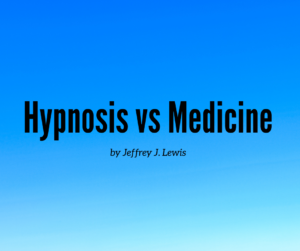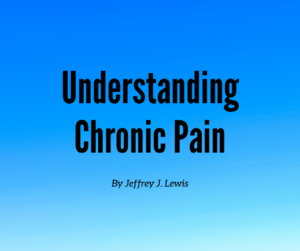
hypnosis vs medicine
In this “Hypnosis vs Medicine” post I want to talk about the philosophical differences between the practice of hypnosis, and modern Western medicine. Are they totally at odds with each other, or is there potentially some common ground between them? Let’s have a look.
Mainstream Western medicine views diseases and their causes as being purely physical. This is why they attempt to treat them with physical tools like pills, chemicals and surgery. The question is, where did they get the idea that everything has a physical basis? This mindset goes back hundreds of years. Prior to the mid-1600’s, the Catholic church in western Europe played a significant role in virtually all aspects of society. It dictated what people were to believe and do. To the church, the human body was considered sacred – just like the non-physical “soul”. This belief made it nearly impossible for doctors and researchers to learn anything new about how the body works.
People studying medicine wanted to dissect cadavers to learn more about human anatomy, but they had to do it secretly because the church considered the human body to be sacred. If a doctor got caught tinkering with a body, the penalty for doing so was death!
A NEW VIEWPOINT IS BORN
Then, in 1637 French-born philosopher, scientist, and mathematician, Rene Descartes came up with the insight of “Cogito – ergo sum”, which means “I think, therefore I am”. Or to paraphrase, “The fact that I have thoughts, proves that I exist. These thoughts are not physical, yet they, and therefore I… exist”. In essence, this awareness separated the mental/spiritual from the physical. With this insight, a new view of reality was born. Thoughts and consciousness are real, they exist… but they’re not physical. After much debate, the church finally conceded to this new way of seeing things. They ultimately concluded that the body was not sacred, and therefore could be studied.
hypnosis vs medicine: the big split
This agreement led to a split between religion & science. Ultimately, a working agreement evolved between the church & science wherein the church would focus on all things spiritual, and science would focus on all things physical. The notion that all things are physical was also supported by the work of Sir Isaac Newton (1642-1727). This mindset is still the dominant operating philosophy behind modern Western medicine. They maintain that a physical problem has a physical cause, and must therefore be treated with a physical solution. Their pendulum of “body vs mind” has swung totally to the physical side. This belief was reaffirmed as recently as 1985. That year, the New England Journal of Medicine said: “It’s time to acknowledge that our belief in disease as a direct reflection of mental state is largely folklore.”
From a hypnotherapy perspective, nothing could be further from the truth. The Greek philosopher Plato (300 B.C.) said; “If you want to heal your body, you must first heal your mind.” This is in total agreement with Mind-Body Medicine and Hypnotherapy today. The non-physical “mind” is not the brain or the body, but it exists in every cell in the brain and body. It is aware of, and in constant communication with every cell in the body. It knows our thoughts, feelings, perceptions and beliefs. Fact is, it actually knows us better than we know ourselves, and is constantly striving to help us achieve mental, physical & spiritual balance.
mind-body medicine
This new Mind-Body Medicine has been named “Epigenetics”, which literally means “over genetics”. It’s even more fundamental than our genes. Epigenitics is slowly gaining ground with mainstream Western medicine, but it still has a long way to go. Wealthy and politically-connected drug companies are fighting to force their old, outdated claims on society… and for good reason. If people realize that they can heal their bodies by using their minds the right way, many popular drugs will become obsolete!
The most influential field of research that is doing more to bring Epigenetics into the mainstream, is Quantum Physics. Quantum Physics is forcing the established medical world to open their minds to a new paradigm. That which has been believed to be physical for centuries, is in fact turning out to be non-physical. In quantum physics, everything is energy. I repeat: Everything is made of energy. Albert Einstein said, “Everything is energy and that’s all there is to it. This is not philosophy, this is physics.” So it turns out that the non-physical, also known as the “spiritual”, and the “physical”, are made of the same stuff… energy. This is as “holistic” as it gets!
hypnosis and epigenetics
So, what does hypnosis have to do with any of this? Actually, quite a lot! Hypnosis is recommended in Epigenetics to influence bodily functions through altering how we think, what we believe, and changing our perspectives. Thoughts, beliefs and perspectives are real things, and they affect our “physical” bodies. It is energy affecting energy. For example, if you think about a bad memory, it can make you feel bad physically. If you believe that you are the “sickly type”, you will develop ways to be sick. If your perspective on life is that it isn’t “fair” and nothing ever goes your way, you’ll feel angry and depressed. Sooner or later, this negative thinking will be reflected in your physiology in the form of dis-ease. Thoughts have consequences!
Notice how each of the examples above leads to a feeling. Feelings affect our entire biology from head to toe… every cell! The thing is, they’re so subtle that we rarely notice them. Your whole body responds to every feeling, good or bad. Behind every feeling, is a thought, belief, and/or perspective. Hypnosis is great for bringing them to our conscious awareness so we can shift them in a positive way. A shift in thoughts, beliefs, and perspectives can change a person’s life. Let me give you some real-life examples of how this works. I’ll present an example from each of my specialties, beginning with Anxiety.
Hypnosis vs Medicine for Anxiety, Chronic Pain, and Trauma/PTSD
Anxiety is defined as “A state of apprehension, uncertainty, and fear resulting from the anticipation of a realistic or fantasized threatening event or situation, often impairing physical and psychological functioning”. As you can see, anxiety is mainly about the future; it’s a fear of something that may or may not happen. One of the best descriptions I’ve run across for anxiety is; “Anxiety is caused by thinking we can control the universe.”
This is so true! It is possibly the most important thing I help my anxiety clients to realize. In the big picture of life, there are many things that we have no control over. The best we can do, is to do our best to prepare for what might happen, and be flexible enough to accept and deal with what actually does happen. We can do our best to prepare for the future, but it will be what it will be, regardless of our best efforts to control it.
chronic pain
Now moving on to Chronic Pain. Chronic pain is any pain that lasts more than 3-6 months after all physical healing has taken place. Just because there’s no apparent physical explanation for the pain, doesn’t mean it’s “all in your head”. The pain is real. This is one area where the use of hypnosis really shines. Chronic pain is very responsive to changes in beliefs and perspectives. In addition, simple, easy-to-use tools like guided imagery and self-hypnosis can do an amazing job of reducing or even eliminating chronic pain all together. In fact, virtually all “chronic” conditions can be effectively treated with hypnotherapy.
trauma/ptsd
Finally, we’ll look at Trauma/PTSD. A trauma is any physical or emotional experience that overwhelms our ability to process it in a healthy fashion. When treating this issue, I focus heavily on the client’s thoughts, beliefs and perspectives. As mentioned earlier, thoughts, beliefs and perspectives generate feelings. PTSD sufferers spend an inordinate amount of time thinking about the trauma that caused their problem. Their memories always include the vivid images, sounds, and feelings of the event. It’s like they’re stuck in a loop of an old movie that just keeps playing over and over again. And the worst part is, they experience the feelings that the old movie generates. This is what causes the stress.
With the use of hypnosis and a few other methods, we can quite easily make changes to that old movie that will disconnect the bad feelings from the memory. You still remember it, but no longer experience the stress it used to cause. Once this is accomplished, we work on altering the beliefs and perceptions of the experience. In other words, you learn how to look at the experience from a different point of view… a higher perspective. This will alter the feelings about it even more. The methods I use do NOT require you to re-experience the event over and over again like some therapies. They are much gentler and more efficient.
from hypnosis vs medicine – to hypnosis + Medicine
In closing, I am absolutely certain that we will one day find hypnosis services available in all mainstream medical facilities. It’s the natural evolution of science and healthcare. At this point in time, hypnosis is roughly in the same category that chiropractic care was before the 1960’s. Few people took it seriously, and the medical system wouldn’t even acknowledge it as a viable healthcare method.
Also included in that category were Osteopathic Physicians or D.O.’s. They tend to lean more in the direction of treating people from a more natural angle, instead of relying exclusively on drugs. Today, both Chiropractic and Osteopathy are accepted by mainstream medicine. I don’t expect to live long enough to see hypnotherapy as a fully-accepted, legitimate part of the medical system, but I am helping to lay the groundwork to make it happen – one person at a time. More and more people are seeking “natural” solutions to their problems every day.
Ultimately, the ideal scenario will be a healthy mix of both mainstream medicine and other scientifically proven methods like hypnotherapy. Instead of hypnosis vs medicine, it will be hypnosis + medicine. We need both. There are without question times when medicine is absolutely the best option. It is most applicable to treating acute conditions requiring surgery, and fighting infections. At other times – especially with chronic physical and emotional conditions – hypnotherapy is by far the best, most effective form of treatment.
*To learn more about Epigenitics, I highly recommend a book entitled: “The Biology of Belief” by Dr. Bruce Lipton. Dr. Lipton has been a brilliant pioneer in bringing Epigenetics to the forefront of modern science and medicine.
Or you can watch his fascinating 2½ hour lecture on this subject on Youtube Here.
Call for a Free Consultation 724-691-3928
